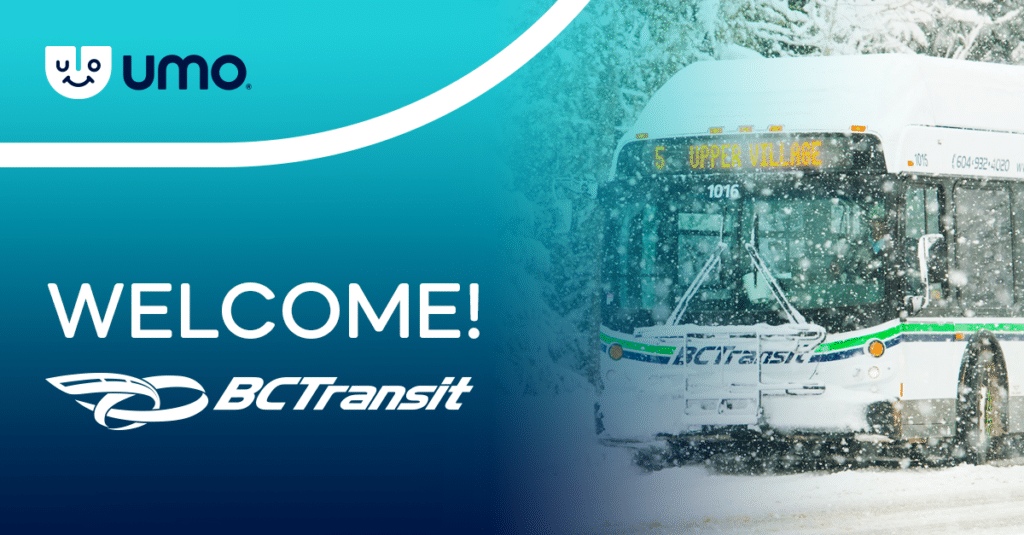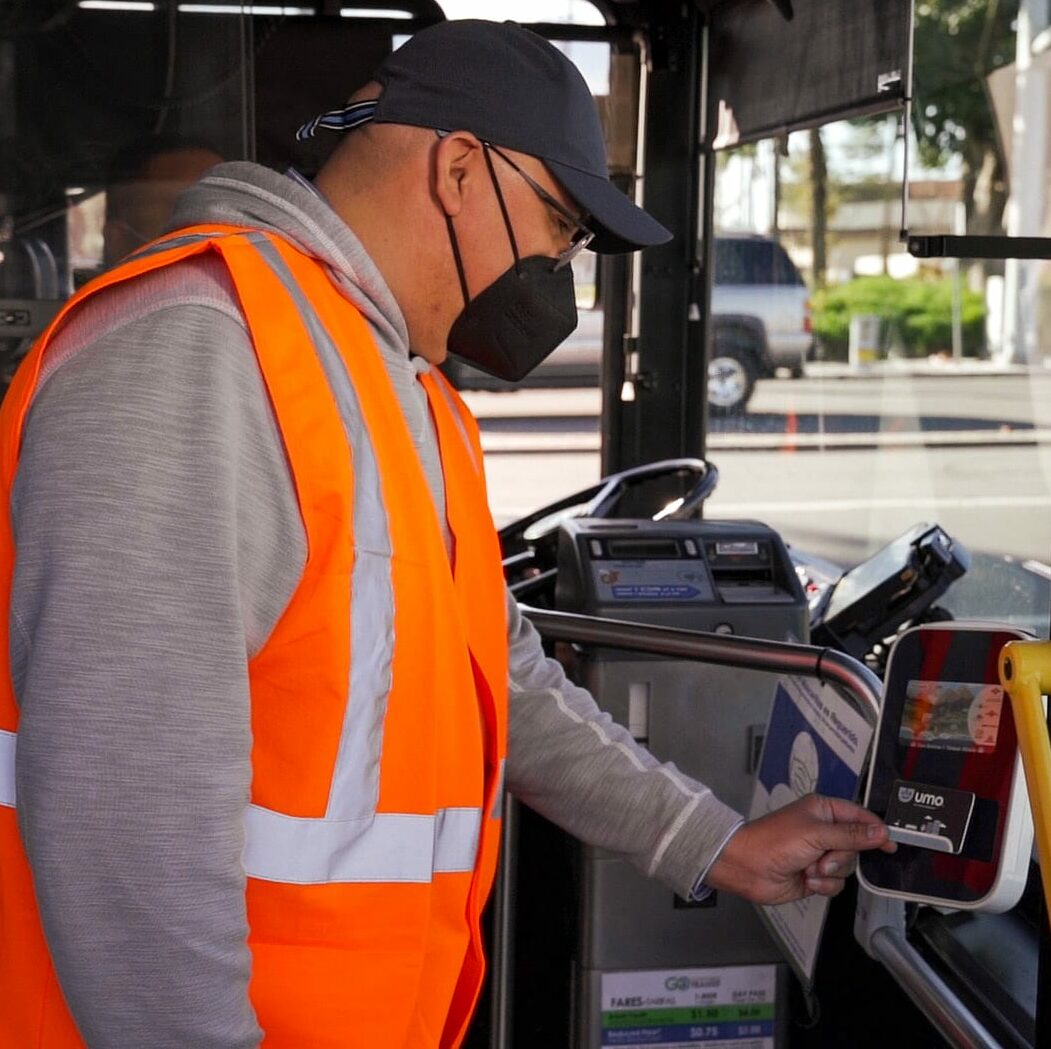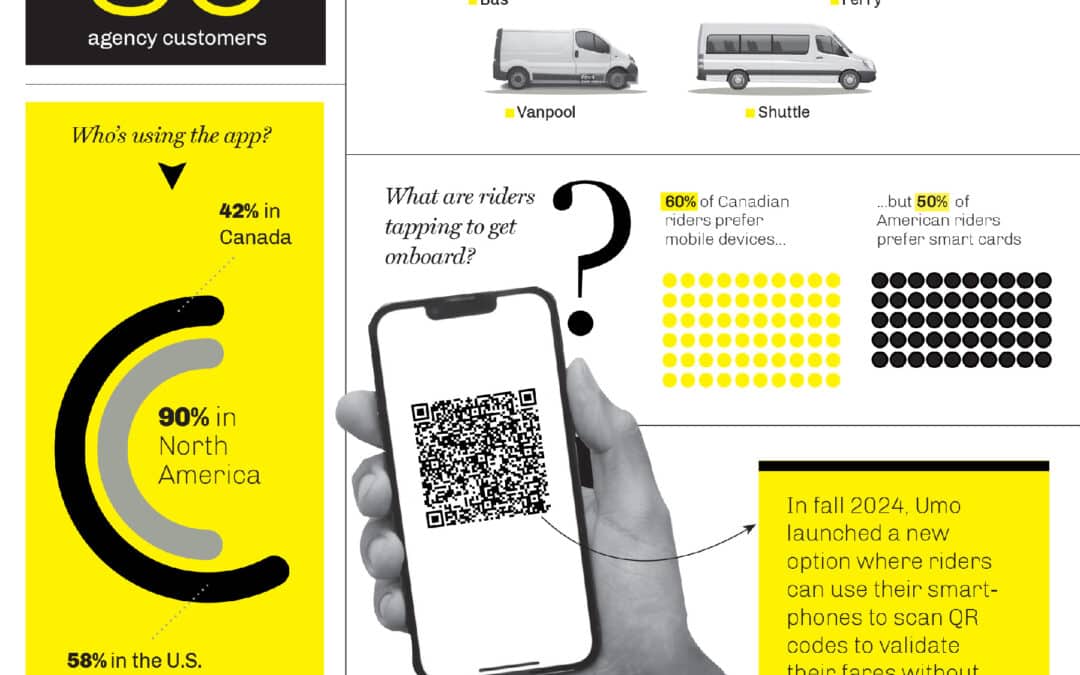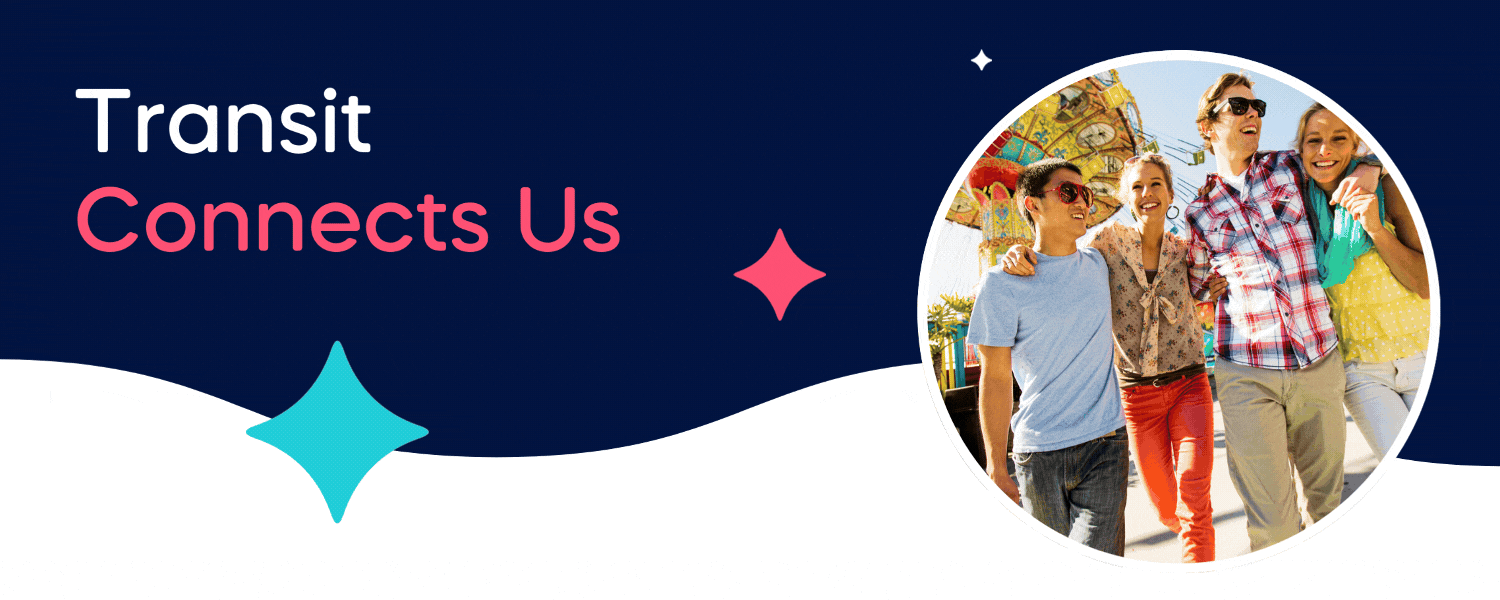BC Transit is bringing contactless payment capabilities with the Umo platform to over 900 buses across more than 30 transit systems, increasing British Columbians’ access to transit. The public transit agency will soon have a single electronic fare collection solution, making public transit a safer, more convenient option for its many local communities. BC Transit, the provincial Crown corporation responsible for coordinating public transit services, in all areas outside of Metro Vancouver, awarded a contract to Cubic Transportation Systems for the Umo platform.
Bringing Contactless Payments to British Columbia Transit Riders

The introduction of Umo will open the door for riders to use contactless pre-paid fare products and contactless open payment technologies such as Apple Pay, Google Pay, and contactless credit and debit cards.
“We are excited to be sharing news of the transformational electronic fare collection system project that will make selecting transit as your mode of choice more convenient and accessible,” said Erinn Pinkerton, president and chief executive officer, BC Transit. “The innovative payment methods that the system will enable, are items that British Columbians carry on them every day. Whether someone is a daily rider, occasional rider, or haven’t taken their first trip yet, Umo will make their trip easier.”
With Umo’s mobile app and reloadable smart card, BC Transit will also offer pre-paid stored value and pass products so that riders can easily purchase with a mobile device, new web portal, or retailer and board simply by scanning their mobile device or tapping their card.
“Cubic has a nearly 20-year history in British Columbia through our partnership with Vancouver’s metro transit authority TransLink,” said Jeff Lowinger, president of Cubic Transportation Systems. “We are excited to expand our partnership to BC Transit and deliver an electronic fare collection system that will ensure riders across the province have a seamless experience.”
Improving Transit Rider Safety & Security

The migration to contactless payments will offer greater convenience to riders while improving safety and security by reducing reliance on cash, automating means of fare purchase, improving onboard cleanliness by reducing farebox touchpoints, and decreasing driver interaction following recovery from the COVID-19 pandemic. In turn, this migration will increase ridership for British Columbia’s interregional transit by utilizing Umo’s tools to administer promotions and programs.
“Public transit is a vital service that should be accessible to citizens from all walks of life, not just those with smartphones or bank accounts,” said Bonnie Crawford, vice president and general manager, Umo. “The Umo platform ensures all riders receive equitable fares, regardless of how often they utilize public transit or the payment method they choose. We are thrilled to partner with BC Transit to make public transit more accessible for British Columbians.”
The project will expand Cubic’s existing footprint in British Columbia outward from Metro Vancouver. Serviced by Cubic’s existing customer, TransLink, the migration will serve small towns and adjacent urban centers, enabling better linkages between the provinces’ principal public transit agencies, BC Transit and TransLink.
Contactless Payments Coming Soon to BC Transit Systems
The new system will be implemented in transit systems and interregional routes in two phases, initially enabling mobile app and reloadable smart card payment methods throughout the province before payment by credit card, debit card, and mobile wallets will be enabled. The Victoria Regional Transit System has been selected for the system’s pilot project and first transit system implementation and can expect to see the system come on board by fall 2022.
Other transit systems and interregional routes scheduled for system implementation include Agassiz-Harrison, Campbell River, Central Fraser Valley, Chilliwack, Comox Valley Regional, Cowichan Valley Regional, Cowichan Valley Commuter, Cranbrook, Dawson Creek, Fort St. John, Fraser Valley Express, Hope Regional, Kamloops, Kelowna Regional, Kitimat, North Okanagan Connector, Pemberton Valley, Port Alberni Regional, Port Edward, Powell River Regional, Prince George, Prince Rupert, Quesnel, Regional District of Nanaimo, Skeena Regional, South Okanagan Connector, South Okanagan-Similkameen, Squamish, Sunshine Coast, Terrace Regional, Vernon Regional, Whistler, and West Kootenay.
BC Transit serves 1.8 million British Columbians in over 130 communities, from small towns to large urban centers. For more information about the agency, visit www.bctransit.com.


